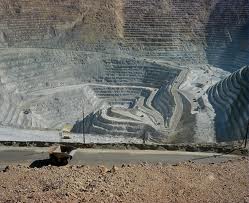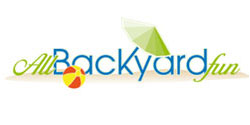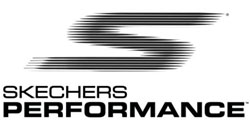Ron Baird, news editor
This user hasn't shared any biographical information
Posts by Ron Baird, news editor

Fee makes big dent in disposable bag use
Mar 10th
After six months in effect, estimates show that the disposable bag fee has reduced use of paper and plastic checkout bags at grocery stores in Boulder by 68 percent. This reduction means the community has kept nearly 5 million disposable bags out of the waste stream since the fee went into effect on July 1, 2013.
“This is very positive news,” said Jamie Harkins, City of Boulder business sustainability specialist. “The bag fee arose from community concerns about the negative environmental and economic impacts of disposable bags in Boulder, and this progress report shows that we are addressing those concerns and doing so effectively.”
The disposable bag fee is one of several city initiatives aimed at bringing Boulder closer to its goal of becoming a zero waste community and diverting 85 percent of the waste stream away from the landfill and into recycling, composting and reuse facilities.
Of the approximately 22 million disposable checkout bags Boulder uses each year, 60 to 70 percent come from grocery stores. A study conducted by consultant TischlerBise in 2012 projected a 50 percent reduction in disposable bag use by the end of the first year of the fee, with approximately 3.6 million disposable bags subject to the fee (i.e. purchased) in the first six months. In actuality, Boulder shoppers have reduced disposable bag use by 68 percent and have purchased significantly fewer bags, approximately 2.3 million in total.
Of the 10 cents collected for each bag, 4 cents goes directly to retailers to defray fee implementation costs. The remaining 6 cents is remitted to the city to support education and outreach efforts about the bag fee as well as to cover expenses associated with providing bags to portions of the population that might be disproportionately impacted by the fee. No revenue collected as part of the fee program can be used to support General Fund services or programs.
The disposable bag fee does not apply to bags used inside stores for items such as produce, bulk food, or meat and fish, and does not apply to pharmacy prescriptions or newspapers.
–CITY–

EPA moves to protect Bristol Bay fishery from Pebble Mine
Mar 7th
Release Date: 02/28/2014
Contact Information: Hanady Kader, EPA Public Affairs, 206-553-0454, kader.hanady@epa.gov
Agency action begins process to prevent damage to world’s largest sockeye salmon fishery
(Washington, D.C.—Feb. 28, 2014) The U.S. Environmental Protection Agency is initiating a process under the Clean Water Act to identify appropriate options to protect the world’s largest sockeye salmon fishery in Bristol Bay, Alaska from the potentially destructive impacts of the proposed Pebble Mine. The Pebble Mine has the potential to be one of the largest open pit copper mines ever developed and could threaten a salmon resource rare in its quality and productivity. During this process, the U.S. Army Corps of Engineers cannot approve a permit for the mine.
This action, requested by EPA Administrator Gina McCarthy, reflects the unique nature of the Bristol Bay watershed as one of the world’s last prolific wild salmon resources and the threat posed by the Pebble deposit, a mine unprecedented in scope and scale. It does not reflect an EPA policy change in mine permitting.
“Extensive scientific study has given us ample reason to believe that the Pebble Mine would likely have significant and irreversible negative impacts on the Bristol Bay watershed and its abundant salmon fisheries,” said EPA Administrator Gina McCarthy. “It’s why EPA is taking this step forward in our effort to ensure protection for the world’s most productive salmon fishery from the risks it faces from what could be one of the largest open pit mines on earth. This process is not something the Agency does very often, but Bristol Bay is an extraordinary and unique resource.”
The EPA is basing its action on available information, including data collected as a part of the agency’s Bristol Bay ecological risk assessment and mine plans submitted to the Securities and Exchange Commission. Today, Dennis McLerran, EPA Regional Administrator for EPA Region 10, sent letters to the U.S. Army Corps of Engineers, the State of Alaska, and the Pebble Partnership initiating action under EPA’s Clean Water Act Section 404(c) authorities.
“Bristol Bay is an extraordinary natural resource, home to some of the most abundant salmon producing rivers in the world. The area provides millions of dollars in jobs and food resources for Alaska Native Villages and commercial fishermen,” McLerran said. “The science EPA reviewed paints a clear picture: Large-scale copper mining of the Pebble deposit would likely result in significant and irreversible harm to the salmon and the people and industries that rely on them.”
Today’s action follows the January 2014 release of EPA’s “Assessment of Potential Mining Impacts on Salmon Ecosystems of Bristol Bay, Alaska,” a study that documents the significant ecological resources of the region and the potentially destructive impacts to salmon and other fish from potential large-scale copper mining of the Pebble Deposit. The assessment indicates that the proposed Pebble Mine would likely cause irreversible destruction of streams that support salmon and other important fish species, as well as extensive areas of wetlands, ponds and lakes.
In 2010, several Bristol Bay Alaska Native tribes requested that EPA take action under Clean Water Act Section 404(c) to protect the Bristol Bay watershed and salmon resources from development of the proposed Pebble Mine, a venture backed by Northern Dynasty Minerals. The Bristol Bay watershed is home to 31 Alaska Native Villages. Residents of the area depend on salmon as a major food resource and for their economic livelihood, with nearly all residents participating in subsistence fishing.
Bristol Bay produces nearly 50 percent of the world’s wild sockeye salmon with runs averaging 37.5 million fish each year. The salmon runs are highly productive due in large part to the exceptional water quality in streams and wetlands, which provide valuable salmon habitat.
The Bristol Bay ecosystem generates hundreds of millions of dollars in economic activity and provides employment for over 14,000 full and part-time workers. The region supports all five species of Pacific salmon found in North America: sockeye, coho, Chinook, chum, and pink. In addition, it is home to more than 20 other fish species, 190 bird species, and more than 40 terrestrial mammal species, including bears, moose, and caribou.
Based on information provided by The Pebble Partnership and Northern Dynasty Minerals, mining the Pebble deposit may involve excavation of a pit up to one mile deep and over 2.5 miles wide — the largest open pit ever constructed in North America. Disposal of mining waste may require construction of three or more massive earthen tailings dams as high as 650 feet. The Pebble deposit is located at the headwaters of Nushagak and Kvichak rivers, which produce about half of the sockeye salmon in Bristol Bay.
The objective of the Clean Water Act is to restore and maintain the chemical, physical, and biological integrity of the nation’s waters. The Act emphasizes protecting uses of the nation’s waterways, including fishing.
The Clean Water Act generally requires a permit under Section 404 from the U.S. Army Corps of Engineers before any person places dredge or fill material into wetlands, lakes and streams. Mining operations typically involve such activities and must obtain Clean Water Act Section 404 permits. Section 404 directs EPA to develop the environmental criteria the Army Corps uses to make permit decisions. It also authorizes EPA to prohibit or restrict fill activities if EPA determines such actions would have unacceptable adverse effects on fishery areas.
The steps in the Clean Water Act Section 404(c) review process are:
- Step 1 – Consultation period with U.S. Army Corps of Engineers and owners of the site, initiated today.
- Step 2 – Publication of Proposed Determination, including proposed prohibitions or restrictions on mining the Pebble deposit, in Federal Register for public comment and one or more public hearings.
- Step 3 – Review of public comments and development of Recommended Determination by EPA Regional Administrator to Assistant Administrator for Water at EPA Headquarters in Washington, DC.
- Step 4 – Second consultation period with the Army Corps and site owners and development of Final Determination by Assistant Administrator for Water, including any final prohibitions or restrictions on mining the Pebble deposit.
Based on input EPA receives during any one of these steps, the agency could decide that further review under Section 404(c) is not necessary.
Now that the 404(c) process has been initiated, the Army Corps cannot issue a permit for fill in wetlands or streams associated with mining the Pebble deposit until EPA completes the 404(c) review process.
EPA has received over 850,000 requests from citizens, tribes, Alaska Native corporations, commercial and sport fisherman, jewelry companies, seafood processors, restaurant owners, chefs, conservation organizations, members of the faith community, sport recreation business owners, elected officials and others asking EPA to take action to protect Bristol Bay.

WBB: Buffs hit trifecta against UCLA
Mar 7th
Story by B.G. Brooks, Contributing Editor, CUBuffs.com
SEATTLE – College basketball in March is all about surviving and advancing – and the Colorado women’s team did both Thursday afternoon in the opening round of the Pac-12 Conference Tournament.
Overtaking UCLA with a 15-2 run midway through the second half, the Buffaloes defeated the Bruins 76-65 to reach the tournament quarterfinals for the third time since beginning Pac-12 competition in 2011.
But the assignment Friday at KeyArena (1 p.m. MT, Pac-12 Networks) is daunting: No. 9 seed CU (17-13) faces No. 1 seed Stanford (28-2). The Cardinal defeated the Buffs 87-77 on Jan. 12 in Boulder in their only regular-season meeting.
“I think we’re ready for them . . . it’s win or go home,” said CU senior guard Brittany Wilson. “So you lay it all on the floor, and we’re ready. We all have to come out and play 40 minutes. In the end, it’s about who plays 40 minutes the best.”
In defeating the Bruins (13-18) for the third time this season, Wilson and her twin sister, Ashley, gave the Buffs 55 quality minutes between them. The Wilson sisters combined for 33 points – 17 from Brittany, a career-high 16 from Ashley – to offset a game-high 23 points from UCLA sophomore Nirra Fields.
Lexy Kresl contributed 14 points off the bench for the Buffs – nine of them in the second half when they rallied from a 46-38 deficit. Kresl’s 3-pointer – the last of eight in 16 attempts for CU – gave the Buffs their largest lead of the game, 68-56, with 2:50 remaining. The Bruins never got closer than six points the rest of the way.
“I’m really excited for our team,” CU coach Linda Lappe said. “Any time you can win a game in postseason, it’s a plus.”
After a 29-29 halftime tie, the Bruins – despite being minus senior guard and No. 2 scorer Thea Lemberger (concussion) who was averaging 15.0 points – went on an 11-2 run and took their 46-38 lead. But Lappe and the Buffs adjusted defensively, nudging the Bruins out of their comfort zone and disrupting their offense.
Said Lappe: “They were really comfortable (offensively) to start the second half. Everybody was making shots, even players that don’t normally make shots. You could just see them start to get comfortable in what they were doing. I always think your defense has a huge part in that, and we wanted to try to make them uncomfortable, so we started to trap a little bit and tried to speed them up and make them do things they weren’t as comfortable doing, making them pass to players, making them pass over hands, and just increasing our aggressiveness.”
UCLA coach Cori Close agreed: “I thought they really got us out of rhythm in the second half . . . they got out and started denying passing lanes and trapped our first pass and really got us out of rhythm. We’re a team that needs to move the pieces around and hide certain mismatches and take advantage of other ones. They really made us play just a read-and-react type of situation, and it made it a guard game. We needed to attack off the dribble, and we didn’t have quite enough people that were confident in that kind of game.”
CU’s strategy worked. Of UCLA’s 13 turnovers, eight were committed in the second half. CU, meanwhile, cut its miscues from nine in the first half to four in the second. The Buffs outrebounded the Bruins 43-35 and held them to 38.8 percent shooting from the field (26-of-67). CU shot slightly better at 39.3 percent (24-of-61).
Lappe lauded her bench, which outscored the Bruins’ reserves 28-16, as being “fantastic . . . everybody did their job. Everybody knew their role. When we played together in that game, we were fantastic. When we moved the ball, when we played together defensively, hit the open player, and then we knocked down those open shots and everything seemed to go our way.”
The Wilson sisters accounted for four of CU’s eight 3-pointers, with Brittany hitting three of her six attempts and Ashley one of her two. The Buffs 50 percent performance from behind the arc, bolstered by four-of-six in the second half, followed a frigid 10 percent (3-of-30) from long range in the final three regular-season games. Thursday’s eight 3-pointers tie for the second most of the season.
“Me and coach watched film before we left (Boulder) , and one thing that she noticed about my shots was I was falling out of my shots,” Brittany Wilson said. “She said there is no reason I should be doing that on the three, and just stay in my shot, and that’s exactly what I did and they fell.”
If the Bruins were without Lemberger, the Buffs also were minus their No. 2 scorer – junior Jen Reese, who went down in the first half of the CU-UCLA meeting in Boulder with a broken bone in her shoulder. Ashley Wilson said the Buffs have adjusted well: “With any team, adversity is going to come. So it’s just about how you respond to adversity and how tough you’re willing to be and how much you’re willing to bounce back. We’ve done that all year long, no matter injuries or whatever. No team is going to feel sorry for you because you have injuries. You have to suit up and be ready to go the next day.”
Fields, a 5-9 sophomore, opened the scoring for UCLA and by the time the first half was over had collected 16 of the Bruins’ 29 points. The Buffs matched that total for a 29-29 halftime tie, but no CU player could manage over six points – the Wilson sisters had six each – in the first 20 minutes.
After Fields hit her jumper for the game’s first basket, the Buffs took control and rolled to a 17-10 advantage before the Bruins settled down. The teams traded baskets and the lead until the halftime buzzer ended play at 29-29. UCLA outscored CU 15-7 in the opening 6 minutes of the second half to take an eight-point (46-38) lead before the Buffs regrouped, went on their decisive run, tied the score at 46-46 on a 3-pointer from the right wing by Lauren Huggins and went ahead for good on a basket by Brittany Wilson.
After Kresl’s trey gave them their largest lead – 68-56 – the Buffs finished out their scoring at the free throw line. Their 20-of-24 performance included Kresl and Brittany Wilson each going four-for-four in the final 1:15 to keep UCLA at bay.
The Buffs move on, the Bruins go home. “We’re not ready to be done playing yet, and I think you can see how much intensity we played in the second half that we want to keep playing,” Lappe said. “I’m just excited for our entire team.”
























